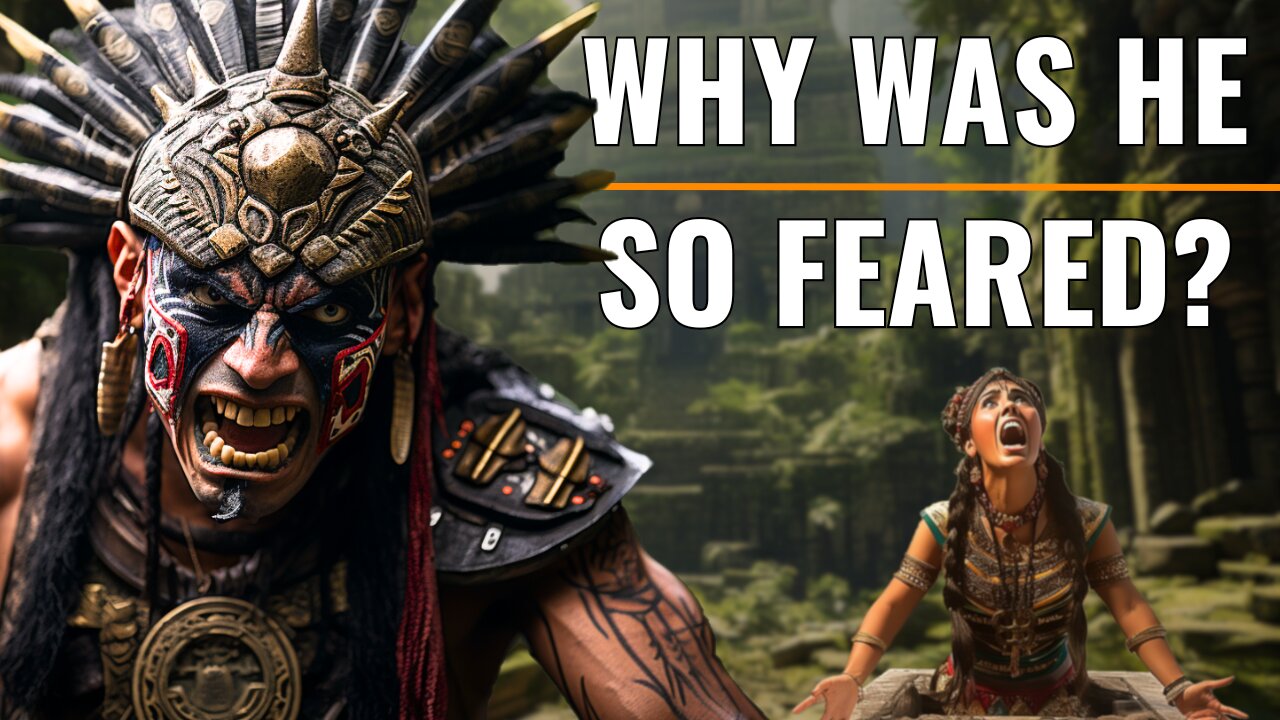Premium Only Content

The Unknown Horrors of the Aztecs
That was an Aztec Death Whistle.
Made by the same civilization that ripped out human hearts atop massive temples to appease their gods. Welcome to the chilling world of the Aztecs.
_______
The Aztecs' practice of human sacrifice was deeply embedded in their complex belief system.
It was a ritual as regular as it was grand, an offering of life to appease the gods and ensure the continuation of the world.
The victims, often captured warriors, were led up the temple steps to meet their fate and the gods.
The belief was strong - the gods were nourished by the life force within the human heart. Each sacrifice was a covenant, a promise of another day, another sunrise.
Thousands could be sacrificed over short periods during specific events, underscoring the scale and societal importance of this ritual.
It was a brutal yet intrinsic aspect of Aztec culture, believed to maintain the delicate balance of the cosmos.
__________
The grandeur of Aztec temples, like the iconic Templo Mayor, was a reflection of the civilization’s spiritual and architectural sophistication.
Each structure, adorned with intricate carvings and murals, was a narrative of myths, an homage to the gods, and a display of astronomical knowledge.
The dual shrines of Templo Mayor epitomized the Aztecs’ belief in the balance of forces, a theme recurrent in their cosmology.
These temples weren’t just religious epicenters but also hubs of learning.
Priests and scholars delved into the mysteries of the stars, crafted calendars, and documented the empire’s expansive history here.
Every stone, every corner was imbued with meaning, making these temples not just architectural marvels but also sacred grounds where the mortal met the divine, and where the pulse of the Aztec civilization was most profoundly felt.
That was an Aztec Death Whistle.
Made by the same civilization that ripped out human hearts atop massive temples to appease their gods. Welcome to the chilling world of the Aztecs.
_______
The Aztecs' practice of human sacrifice was deeply embedded in their complex belief system.
It was a ritual as regular as it was grand, an offering of life to appease the gods and ensure the continuation of the world.
The victims, often captured warriors, were led up the temple steps to meet their fate and the gods.
The belief was strong - the gods were nourished by the life force within the human heart. Each sacrifice was a covenant, a promise of another day, another sunrise.
Thousands could be sacrificed over short periods during specific events, underscoring the scale and societal importance of this ritual.
It was a brutal yet intrinsic aspect of Aztec culture, believed to maintain the delicate balance of the cosmos.
__________
The grandeur of Aztec temples, like the iconic Templo Mayor, was a reflection of the civilization’s spiritual and architectural sophistication.
Each structure, adorned with intricate carvings and murals, was a narrative of myths, an homage to the gods, and a display of astronomical knowledge.
The dual shrines of Templo Mayor epitomized the Aztecs’ belief in the balance of forces, a theme recurrent in their cosmology.
These temples weren’t just religious epicenters but also hubs of learning.
Priests and scholars delved into the mysteries of the stars, crafted calendars, and documented the empire’s expansive history here.
Every stone, every corner was imbued with meaning, making these temples not just architectural marvels but also sacred grounds where the mortal met the divine, and where the pulse of the Aztec civilization was most profoundly felt.
That was an Aztec Death Whistle.
Made by the same civilization that ripped out human hearts atop massive temples to appease their gods. Welcome to the chilling world of the Aztecs.
_______
The Aztecs' practice of human sacrifice was deeply embedded in their c
The victims, often captured warriors, were led up the temple steps to meet their fate and the
The belief was strong - the gods were nourished by the life force within the human heart. Each sacrifice was a covenant, a promise of another day, another sunrise.
Thousands could be sacrificed over short periods during specific events, underscoring the scale and societal importance of this ritual.
It was a brutal yet intrinsic aspect of Aztec culture, believed to maintain the delicate balance of the cosmos.
__________
The grandeur of Aztec temples, like the iconic Templo Mayor, was a reflection of the civilization’s spiritual and architectural sophistication.
Each structure, adorned with intricate carvings and murals, was a narrative of myths, an homage to the gods, and a display of astronomical knowledge.
The dual shrines of Templo Mayor epitomized the Aztecs’ belief in the balance of forces, a theme recurrent in their cosmology.
These temples weren’t just religious epicenters but also hubs of learning.
Priests and scholars delved into the mysteries of the stars
-
 LIVE
LIVE
Caleb Hammer
1 hour agoFinancial Audit's First Furry
63 watching -
 LIVE
LIVE
The Big Mig™
1 hour agoOperation Arctic Frost FAFO!
4,330 watching -

VINCE
2 hours agoThe Dems Are Desperate So They're Breaking The Law | Episode 154 - 10/24/25
54.5K62 -
 LIVE
LIVE
Badlands Media
8 hours agoBadlands Daily: October 24, 2025
3,620 watching -
 LIVE
LIVE
Major League Fishing
8 days agoLIVE! - Fishing Clash Team Series: Patriot Cup - Day 3
137 watching -
 LIVE
LIVE
Film Threat
23 hours agoFRANKENSTEIN + SHELBY OAKS + CHAINSAW MAN + MORE REVIEWS | Film Threat Livecast
30 watching -
 LIVE
LIVE
Side Scrollers Podcast
22 hours ago🔴FIRST EVER RUMBLE SUB-A-THON🔴DAY 4🔴BLABS VS STREET FIGHTER!
1,063 watching -
 1:07:07
1:07:07
Graham Allen
3 hours agoLibs Are FUMING Over Trumps Ballroom! + Trump ENDS ALL Trade Talk With Canada And NBA Scandal!!
81.6K56 -
 27:30
27:30
Simply Bitcoin
1 day ago $3.15 earnedAndré Loja: The Man Building a Sovereign Bitcoin Island
9.31K4 -
 30:50
30:50
Matt Kohrs
23 hours agoPlan B w/ Rahim Taghizadegan || The Matt Kohrs Show
15.6K